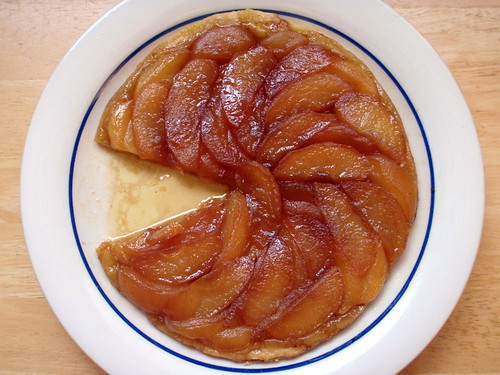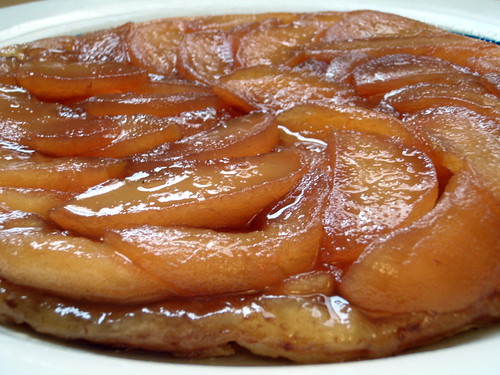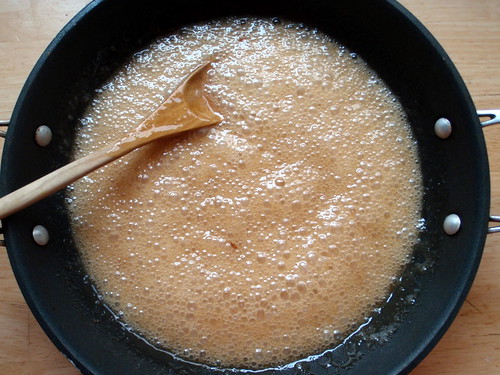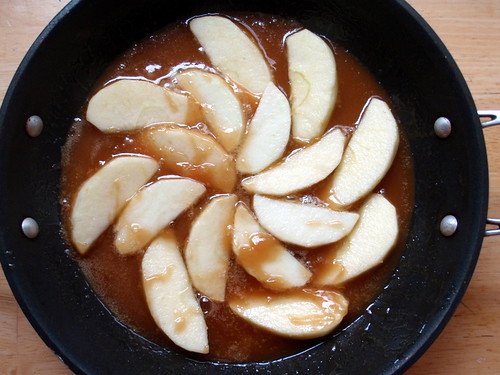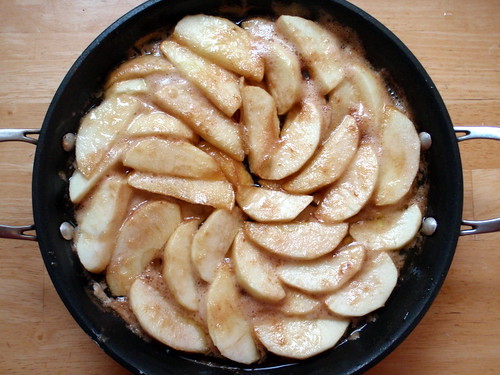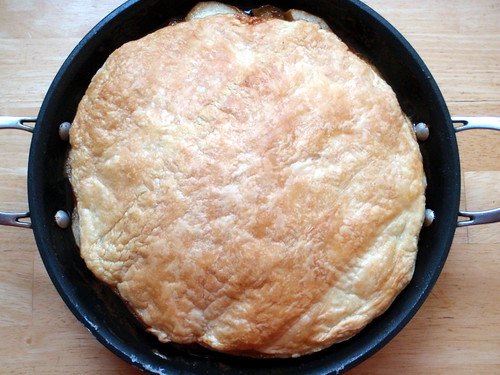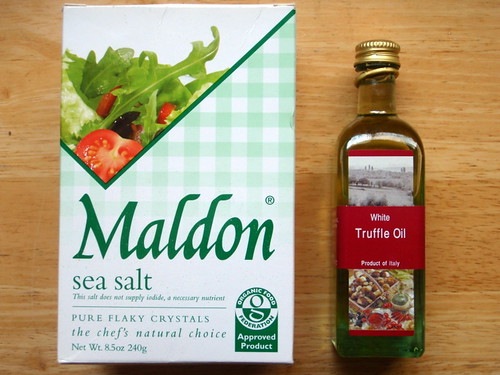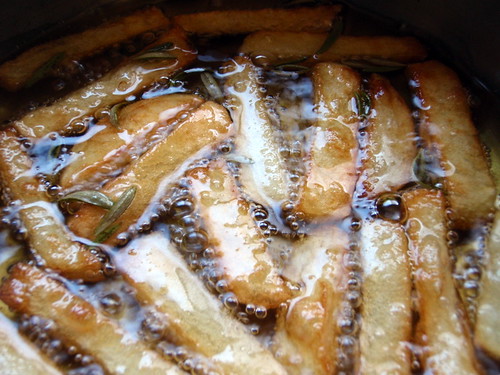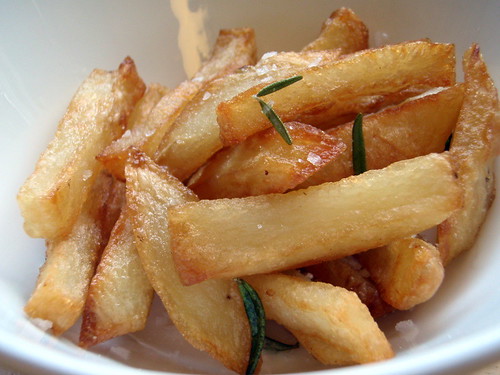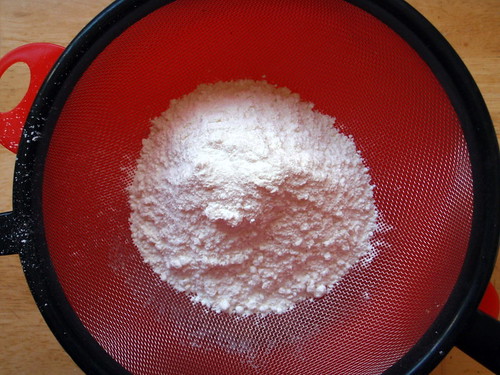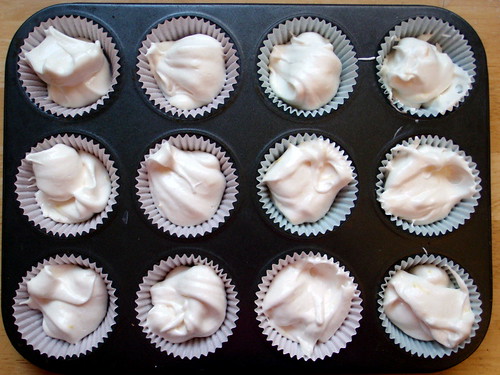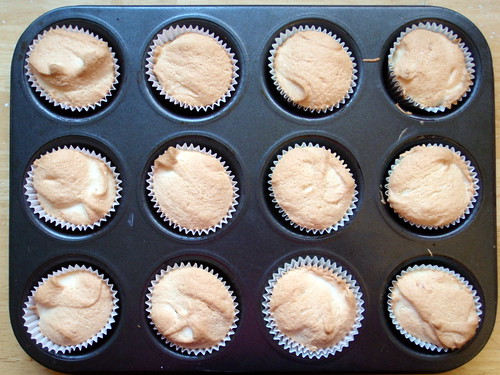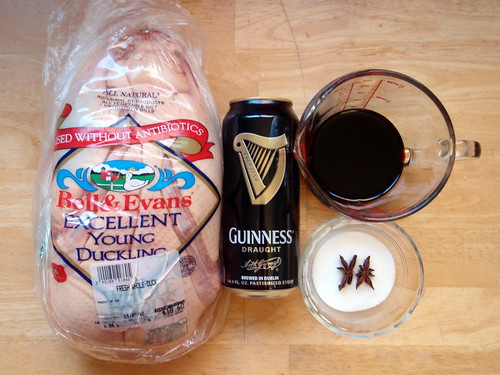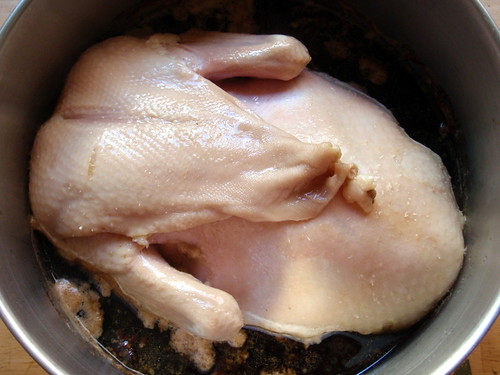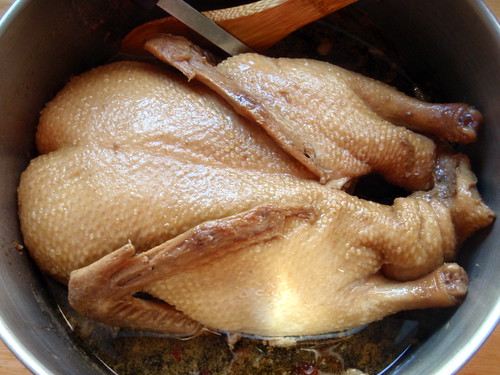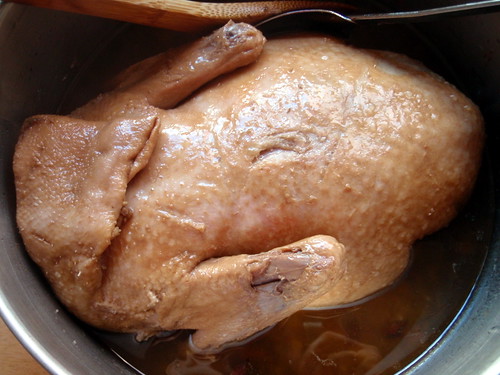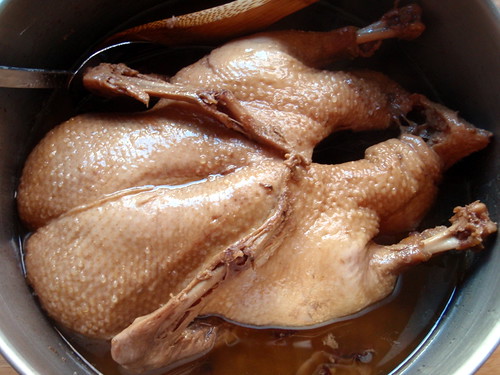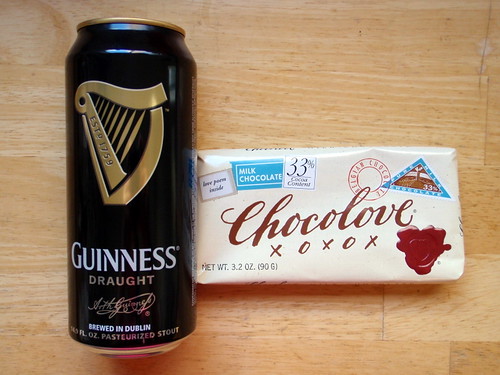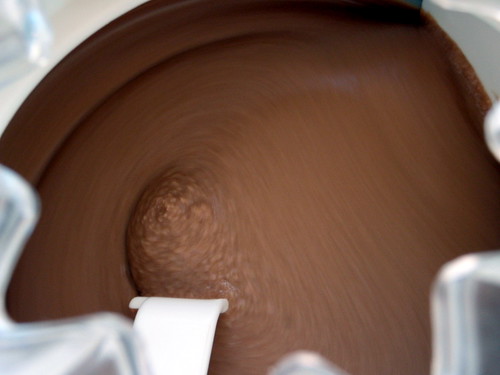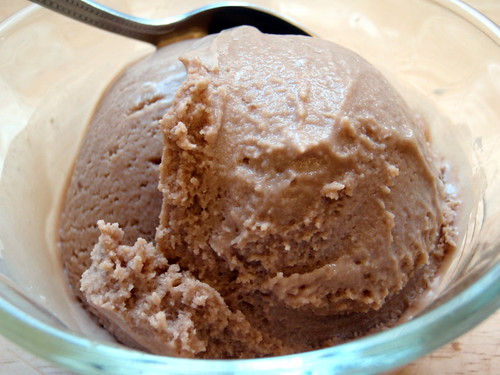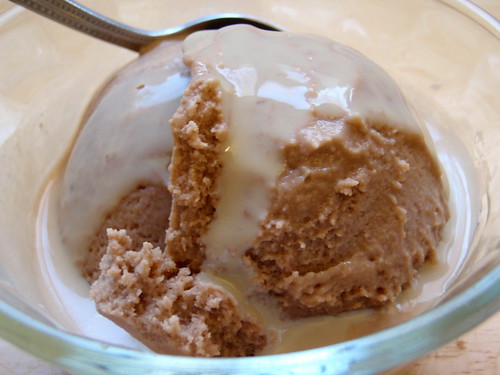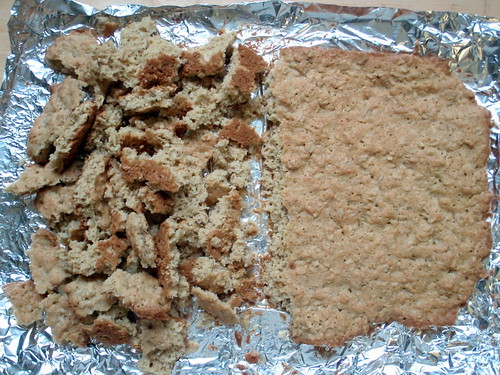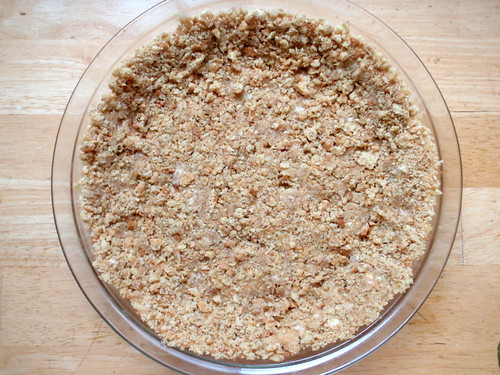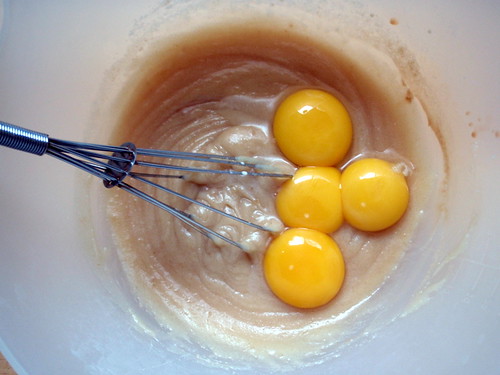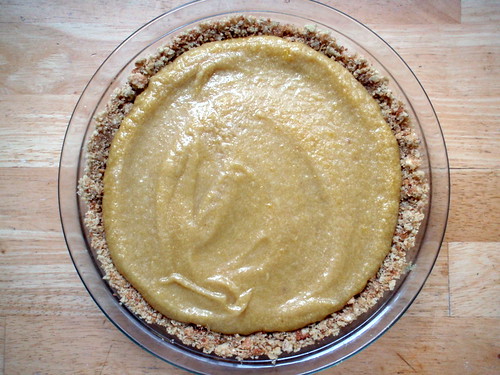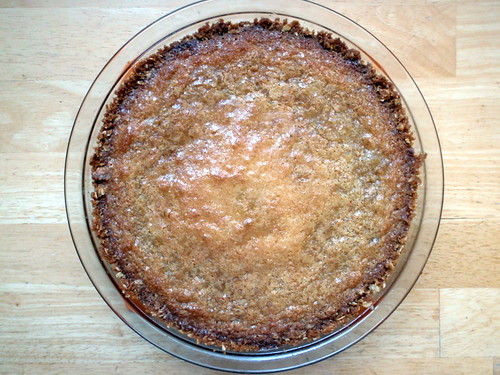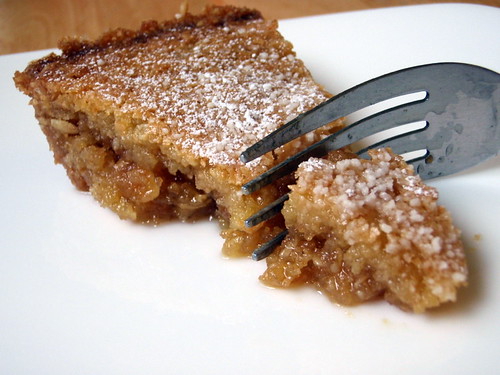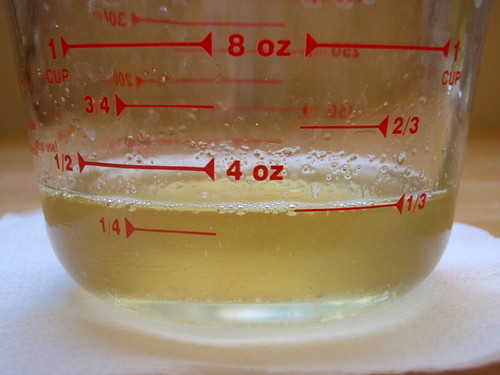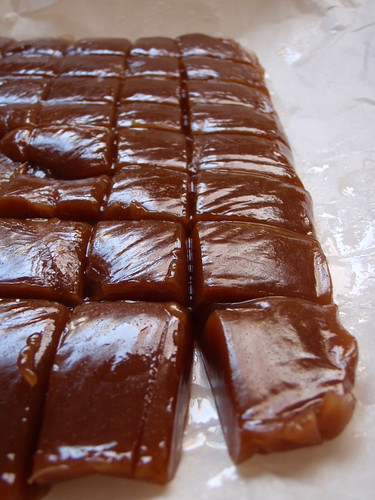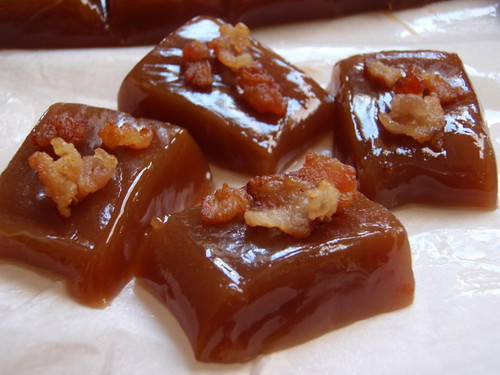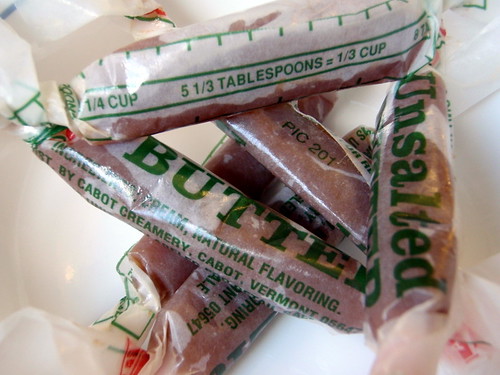I had a couple of apples plus a lemon from the last Boston Organics delivery, so when I found a box of puff pastry in my freezer that I had forgotten about, I immediately thought of trying to make a tarte tatin. I never took French, so I have no idea how to pronounce that, but it sure sounded good: apples caramelized in butter and sugar, then topped with puff pastry and finished in the oven.
I remembered Molly (of Orangette fame) had included a recipe for tarte tatin in her book, A Homemade Life, so I pretty much followed that version. It wasn't until I went to copy and paste her version on-line that I realized the book version of the recipe didn't exactly mention that the puff pastry was supposed to be "1/2 inch wider all around than the skillet". And you can see why below; the pastry shrinks as it bakes. But I don't think it really matters all that much once you flip it over. I also changed it up a bit by cutting the apples into sixteenths instead of quarters since I only had 4 apples. And instead of placing them rounded side down, I made a spiral patter with the slices on their sides.
Apple Tarte Tatin (based on Orangette's version here)
makes 8 servings
4 large apples, (I used Fuji)
Juice of 1 lemon
1 ½ cups granulated sugar
6 tablespoons unsalted butter, divided
About 14 ounces puff pastry
Peel and core the apples and cut each into 16 slices. Toss the apple slices in a large bowl with the lemon juice and ½ cup of the sugar. Set aside for 30 minutes.
makes 8 servings
4 large apples, (I used Fuji)
Juice of 1 lemon
1 ½ cups granulated sugar
6 tablespoons unsalted butter, divided
About 14 ounces puff pastry
Peel and core the apples and cut each into 16 slices. Toss the apple slices in a large bowl with the lemon juice and ½ cup of the sugar. Set aside for 30 minutes.
Melt 4 tablespoons of butter in a 9-inch oven-safe skillet over medium heat. Add the remaining 1 cup sugar, along with a few tablespoons of the apple-lemon juices. Stir to mix. Cook the mixture over medium-low heat, stirring regularly with a wooden spoon, for about 15 minutes, or until the mixture is a smooth, bubbly, pale caramel color.
Remove the pan from the heat and carefully add apple slices, arranging them neatly in a decorative pattern. Arrange a second layer of apples on top wherever they fit, closely packed. This second layer need not be terribly neat. Top the apples with the remaining 2 tablespoons of butter, cut into dice.
Preheat the oven to 375°F.
Cook the apples over medium-low heat for about 20 minutes, occasionally spooning the bubbling caramel liquid over them. Press them down gently with the back of a spoon — don’t worry if they shift a bit in the liquid; just move them back to where they were — and watch to make sure that no one area of the pan is bubbling more than another. Shift the pan as necessary so that the apples cook evenly. They are ready when the liquid in the pan has turned to a thick, amber ooze. The apples should still be slightly firm. Do not allow them to get entirely soft or the liquid to turn dark brown. Remove the pan from the heat.
Cook the apples over medium-low heat for about 20 minutes, occasionally spooning the bubbling caramel liquid over them. Press them down gently with the back of a spoon — don’t worry if they shift a bit in the liquid; just move them back to where they were — and watch to make sure that no one area of the pan is bubbling more than another. Shift the pan as necessary so that the apples cook evenly. They are ready when the liquid in the pan has turned to a thick, amber ooze. The apples should still be slightly firm. Do not allow them to get entirely soft or the liquid to turn dark brown. Remove the pan from the heat.
On a floured surface, roll the puff pastry out to a thickness of about 3/16 inch. Using a sharp, thin knife, trace a circle in the pastry about 10 inches in diameter (1/2 inch wider all around than the skillet), and trim away any excess. Carefully lay the pastry circle over the apples in the skillet, tucking the overlap down between the apples and the inside of the pan.
Place the skillet on a rimmed baking sheet, and bake for about 30-35 minutes, until the pastry has risen, and is dry and golden brown. Remove the skillet from the oven, and let it to rest for a minute or two. Tilt the pan and look down inside the edge: if there is a lot of juice, pour most of it off into the sink. [Do not pour it all off, or the apples may stick to the pan.] Place a serving platter upside-down over the skillet and, working quickly and carefully (it’s hot!), invert the tart onto the platter. Rearrange any apple slices that may have slipped or stuck to the skillet. Serve warm or at room temperature.
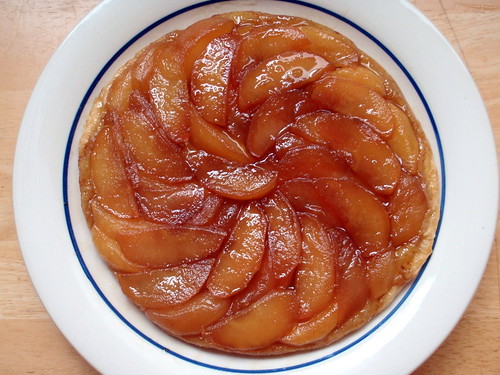
Now if only I could figure out what to do with all the buttered apple juices I drained off....
Next: The Best Scones in the World
Previously: Duck Fat French Fries with Rosemary, Maldon Salt, and Truffle Oil
Next: The Best Scones in the World
Previously: Duck Fat French Fries with Rosemary, Maldon Salt, and Truffle Oil
